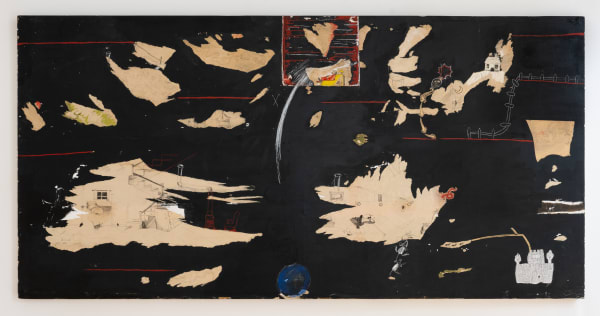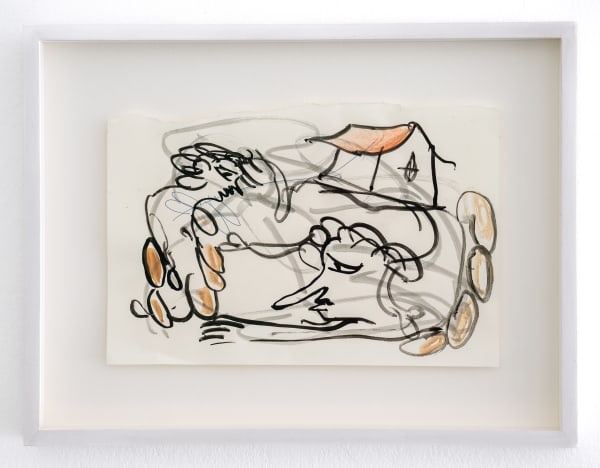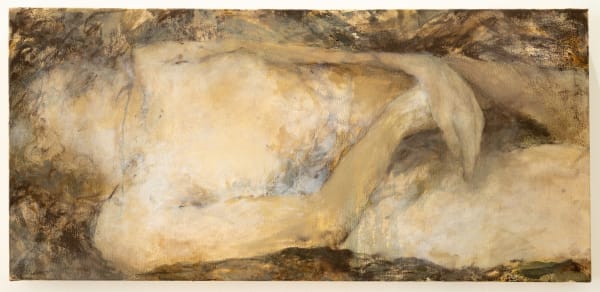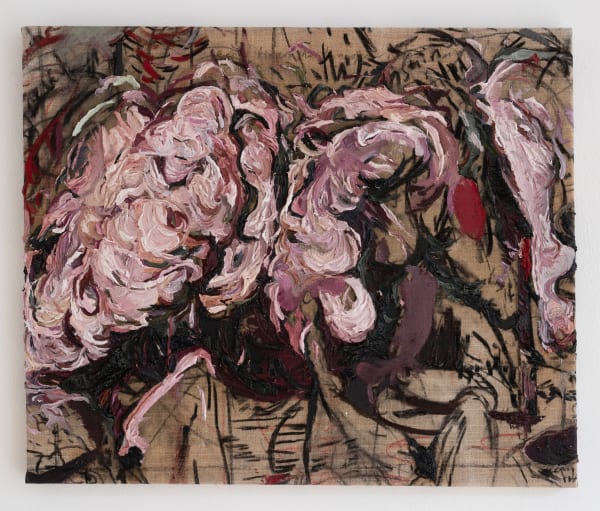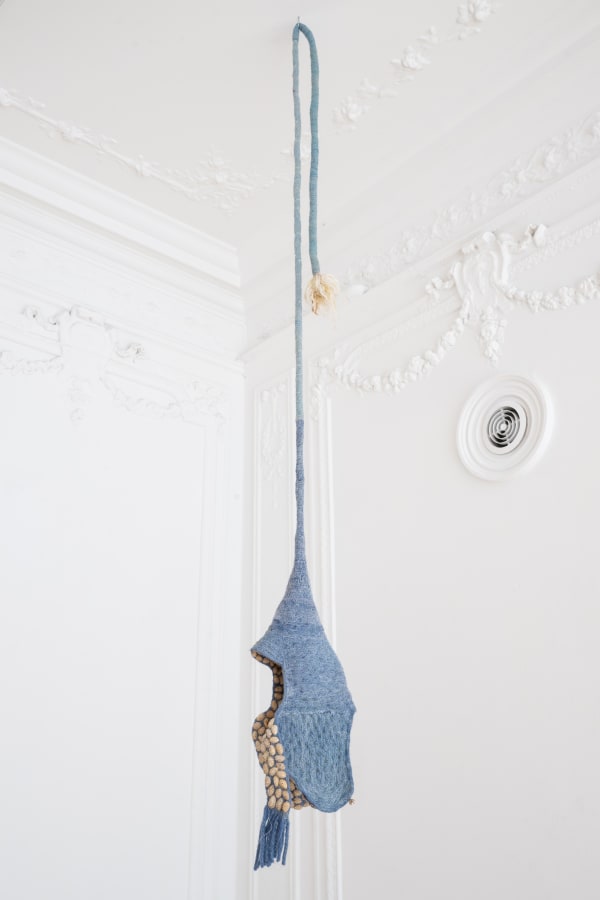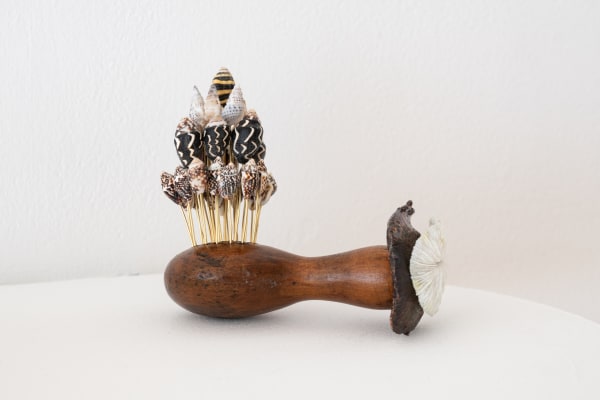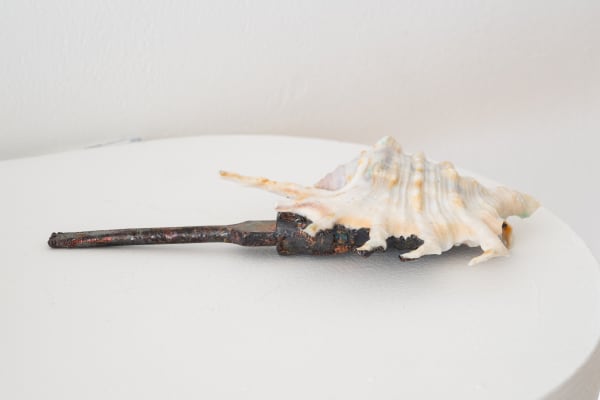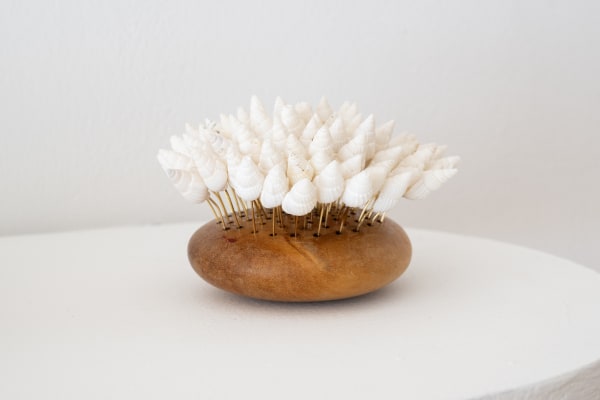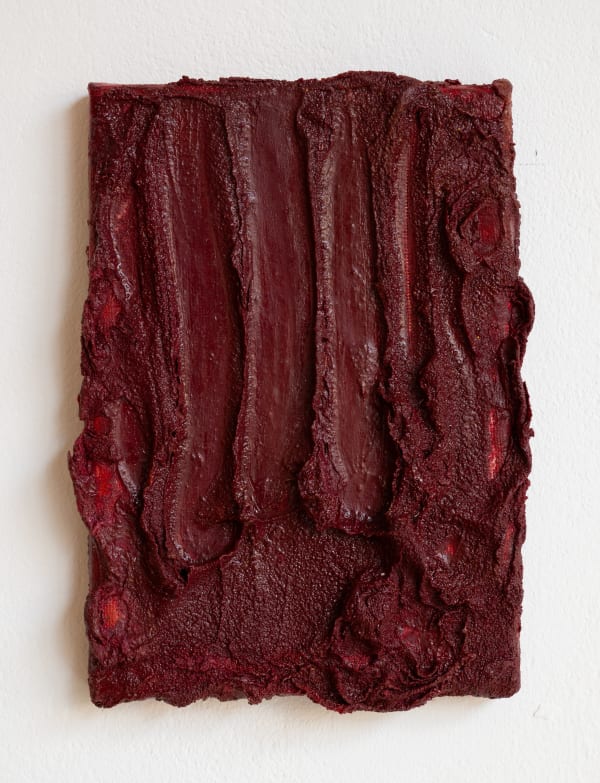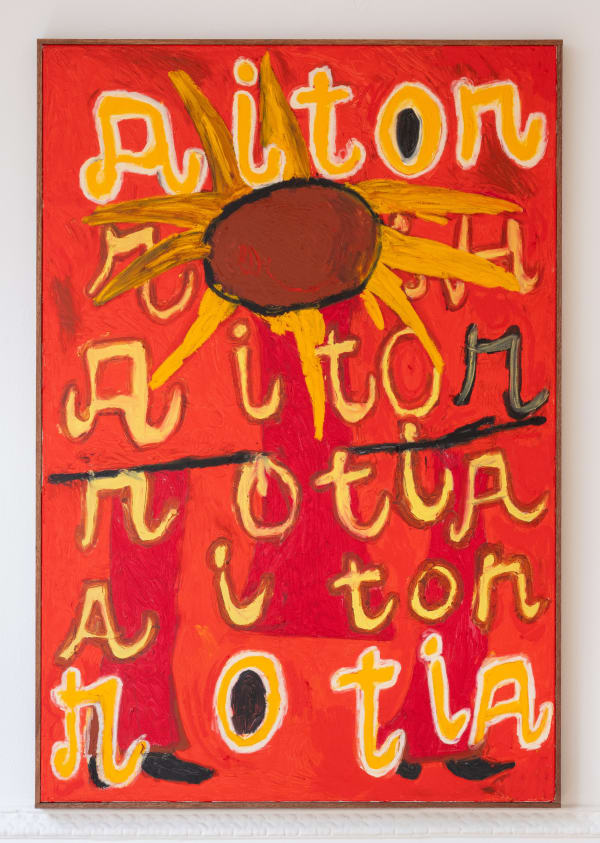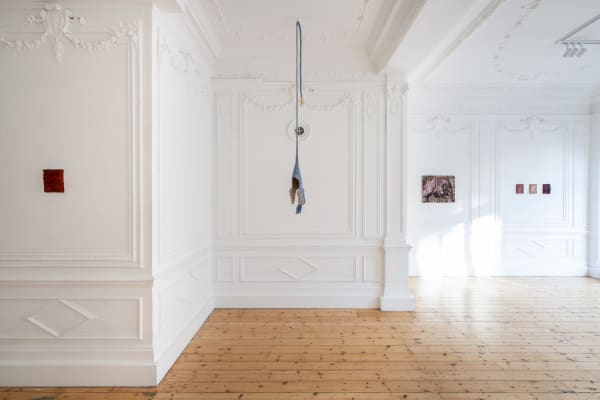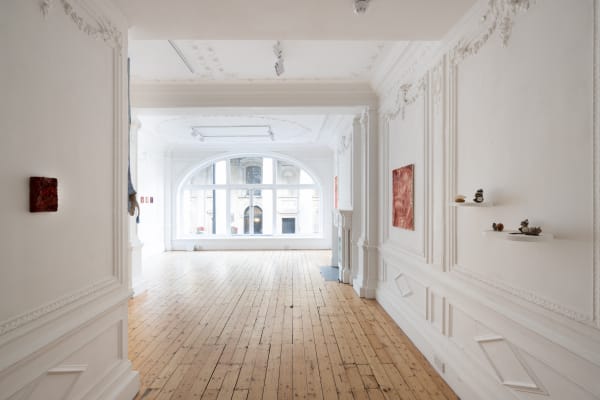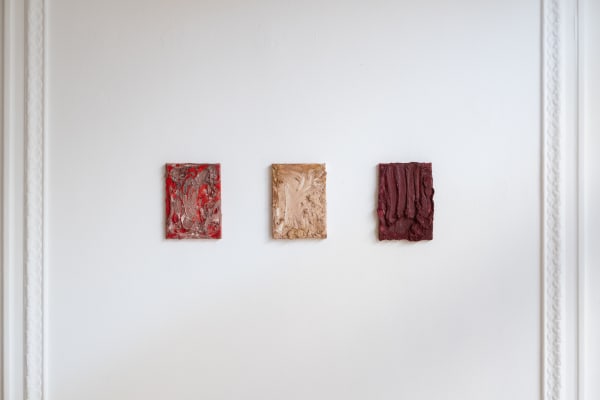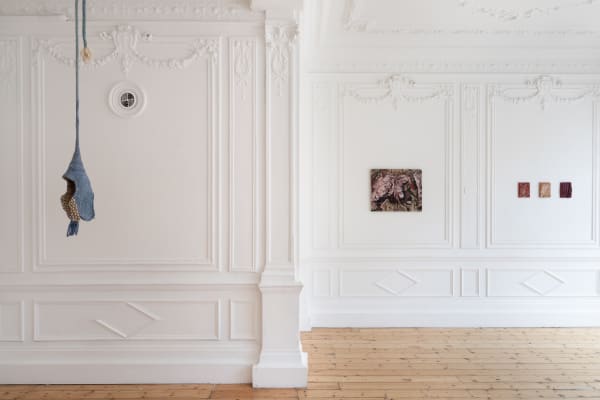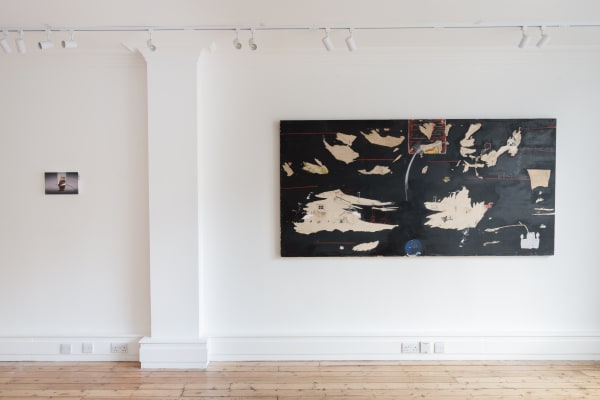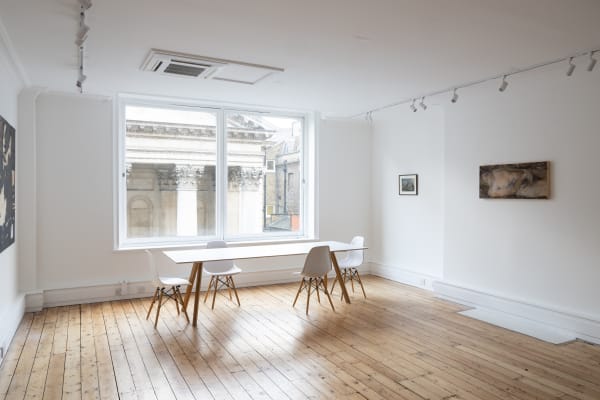Vital
Featuring works by:
Charlie Boothright, Ellie Cotton, Diogo Gama, Aitor Gonzalez, Mia Graham, Rafaella Lazarou, Ranny Macdonald, Kit Reynolds, Joanna van Son, Victor Seaward, Emma Witter
At the onset of 2025, General Assembly is pleased to present Vital. Engaging with art historical dialogues about pictorial and visual language in our contemporary moment, Vital seeks to address questions about how value is communicated in today’s increasingly digital culture. General Assembly seeks to investigate how artists both new to General Assembly and those the gallery has an established relationship with communicate value in their work. What is the language which we communicate through today? Is that language necessarily communicated through painting? Does today’s art translate as “vital”?
Vitality in art, and the definition of that idea, has been approached in dramatically different ways between the 20th and 21st centuries. Where, at one moment in time, the visual language was communicated through the values of, say, abstract expressionism, that location of communication has given way to all manner of modes of thinking and communicating. California’s Light and Space movement, Pop, conceptual art, and the Young British Artists group exemplify moments of an approach to expressing a visual language. Larger global discourses about pictorial language reach every corner of the visual arts. We arrive now in a time when it is necessary to continue to ask ourselves what today’s visual language is and how we communicate value with one another through art.
Across the first-floor gallery space is a presentation of artworks by Charlie Boothright, Aitor González. Rafaela Lazarou, Kit Reynolds, Joanna van Son and Emma Witter. These artists engage with a variety of material practices to successfully execute paintings and sculptures which communicate emotion, conjure stories, and engage with different histories as their subject. For many of these artists, it is their first time exhibiting with General Assembly. Their participation in the exhibition serves to offer a view of compelling contemporary practices across London.
Predominantly consisting of paintings and works on paper, the second-floor gallery space exhibits the work of Ellie Cotton, Diogo Gama, Aitor González, Mia Graham, Ranny Macdonald, and Victor Seaward. As these artists exhibited with General Assembly in 2023 and 2024, the gallery returns to their work to examine how these London-based artists successfully communicate a variety of informed perspectives. Furthermore, Vital seeks to assert that these works are viable and dialectical in today’s increasingly digital landscape.
Several present themes in this selection of work deserve further discussion. The use of non- canvas supports is a cognizant consideration presented in this exhibition. Victor Seaward’s 3D-printed and industrially finished aluminum panel Object Painting (German Shepards) is a stark contrast to the other works in the exhibition. While Seaward incorporates low-relief elements reminiscent of Wedgwood porcelain on the surface of the work, the underlying manufactured support juxtaposes the handcrafted visual elements recognized from jasperware common across the United Kingdom. Diogo Gama’s Restless Workers Sleepy Heads incorporates found board as a support, where tears from removed paper become integral components of positive and negative space in the composition. These works co-habit an important dialogue about the active role supports play in the completion of an informed artwork.
The treatment of paint is dramatically varied in Vital, albeit to different philosophical ends for each artist. Mia Graham’s painting Dreams of Abandonment is a compelling example of Graham’s physically layered application of paint in her practice. While the human is one of three totemic figures which Graham uses to encourage an exploration of physical decay and regeneration, Graham’s presence in the painting is immediately visible in the fingerprints on the canvas. The recumbent figure, sensitively captured in Graham’s limited colour palette, is a wonderful example of her presentation of this totemic subject. Ellie Cotton’s playful renditions of a monk in Ring Light Study (i) actively unites religious narratives and art history with contemporary digital culture. Her repeated focus on St. Francis, and personal journey to Assisi, Italy, asserts the role which traditional narratives continue to impress upon contemporary artists. Importantly, Cotton integrates easily recognizable elements of the 21st century, such as popularized ring lights and the digital space of the ‘cloud’ to contextualize these well-worn historical conventions. Traditional narratives also take shape in overt art historical references. Diogo Gama’s Staircase in Loop (Drawing Exercise) looks to the work of graphic artist and printmaker M.C. Escher, illustrating the importance of art history in informing artistic practices and the necessary role draftsmanship continues to play in contemporary art.
Charlie Boothright’s paintings keenly explore material combinations. Mixing pigment with organic material such as beeswax in Embers or wood chips in Refuge, Boothright works with a scientific curiosity to explore combinations that express rich emotions and feelings. Though intimate in scale, the resulting works have a dramatic and commanding presence. Joanna van Son lays bare the layers which construct her paintings as exemplified in Fragment of 04.24-05.24 Portrait. Immediately apparent is the thick impasto of oil paint in the center of the painting juxtaposed by thinly painted and exposed passages of linen canvas. The work itself is a cut fragment from a larger portrait by the artist. Van Son’s compositional restructuring of her paintings can be viewed as both an act of elevation and omission, and an active presentation of her painterly process. Kit Reynolds examines the relationship between history and material in his painting The Thrill of it All, which depicts a closely cropped breastplate from a suit of armour. This work is part of an untitled series of monochromatic red pictures illustrating objects from high and low British culture. In this series Reynolds employs Venetian red pigment, a pigment notable for its use as a dye for the British army’s famed red military coats. Uniforms in this colour were issued from the Tudor period in 1485 to the beginning of World War I in 1914. Reynolds invokes a rich and challenging history unique to British culture through his paintings.
A majority of artworks in the exhibition incorporate figurative abstraction in painting and works on paper. Contemporary dialogue with art relies on moments of personal relativity to engage and encourage a reaction in the viewer. Ranny Macdonald’s Shadow and Aitor González’s Untitled (Me and Mum as Potatoes and Dad as a House in the Back) contribute to this dialogue. Macdonald’s work blurs ideas of world building, space, and moral value through a straightforward compositional structure. Alternatively, González heavily abstracts his figures and personal narrative using layered watercolour and pen lines. These two works impress the impact of small format works and their role in conveying intimacy in this exhibition. González’s large format painting Hole in the Sky and My Name Pouring Through It similarly engages figurative abstraction, as a pair of black boots and pant legs are visible behind the repeated lettering of the artist’s name. The repetition of ‘Aitor’ over the painting creates an entrancing rhythm, reinforced by the similarity of forms in the letters and disrupted by the reversal of the word within the composition. This pattern reflects language patterns found in Quechua culture, while vibrant reds and yellows imbue an undeniable intensity to the painting inspired by the colours used in indigenous Andean textiles. The imagery of the painting engages with González’s investigation of identity and symbolism of Andean folklore.
Sculptural works by Emma Witter and Rafaella Lazarou broaden the modes of communicating visual language which Vital seeks to investigate. Witter’s Unidentified Objects delightfully confuse antiquity, utility and impracticality. Seashells adorn found wooden and metal elements; Witter literally reconfigures elements from London’s physical landscape to her own ends. The objects are the result of a wonderful metamorphosis which encourages a reconsideration of oceanic biomass, Victorian Britain’s fascination with scientific discovery, and the physical world in which we live. Lazarou’s Legenda Aurea, Hat (Her) In collaboration with (her) translates a wonderful sense of whimsy. Suspended from the ceiling, Lazarou’s sculpture fuses wool, silk, bronze, and nut shells to create an organic form.
Similarly located between impracticality and a usable object, Lengenda Aurea encourages close looking; abundant threads sewn into the cloth on the blue woolen outside are juxtaposed by hard pistachio shells which cover the inner folds of the sculpture. The object is that of fantasy, existing simultaneously between the Lanzarou’s imagination and our own.
Vital serves as a snapshot of London based artists and their engagement with the visual landscape in our contemporary moment. With one foot in the realm of artists new to General Assembly and the other continuing to walk alongside familiar faces, the gallery is thrilled to present an exhibition bringing these 11 artists together. At the quarter of this 21st century, General Assembly is eager and honored to participate in the visual culture of the new year.


